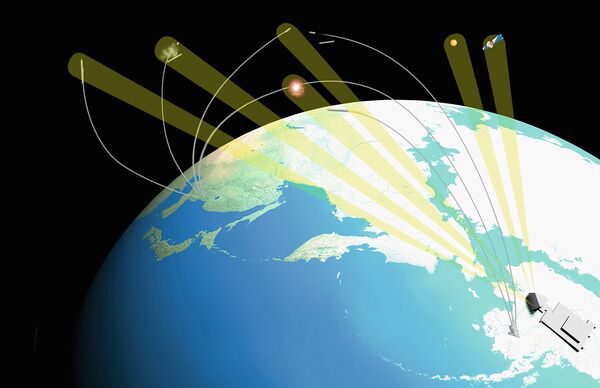
An artist's concept of how Lockheed Martin's LRDR would detect ballistic missile launches from Asia. The radar completed preliminary design review in March and will go through critical design review in September 2027. (Lockheed Martin)
The Pentagon's Missile Defense Agency (MDA) and its industry counterparts at Lockheed Martin are preparing for the ‘final transition' of the long-awaited Long Range Discrimination Radar (LRDR) to the US armed forces in the Indo-Pacific region.
LRDR programme officials officially transitioned control of the S-band missile defence radar to the MDA on 23 April, according to a company statement. The handover of the system, currently stationed at Clear Space Force Station in Alaska, will allow agency officials to finalise the Operational Capability Baseline (OCB) milestone, which is the final stage before the LRDR is handed over to US Space Force (USSF) units. “Prior to this transition, the system has started space domain awareness data collects” for USSF units, the 23 April statement said.
A gallium-nitride (GaN)-based S-Band radar, the LRDR is designed to carry out persistent mid-course detection to help US and allied interceptor missiles find and track an adversary warhead travelling in space towards targets within the Indo-Pacific region. The radar completed initial fielding in fiscal year (FY) 2022.
The MDA set aside USD105 million in FY 2025 for the radar programme, with USD100.8 million of these funds earmarked for research, development, test, and evaluation (RDT&E). The proposed RDT&E funding for the LRDR will be used to finance “software development for discrimination improvements” even after the system is fully deployed, MDA officials said in their FY 2025 spending blueprint. These discrimination improvements include differentiating between actual ballistic missile threats and “non-lethal decoys” designed to confuse and overwhelm missile defence systems, according to the statement.
Looking to read the full article?
Gain unlimited access to Janes news and more...







